This Is How Dark Energy’s Main Competitor Failed
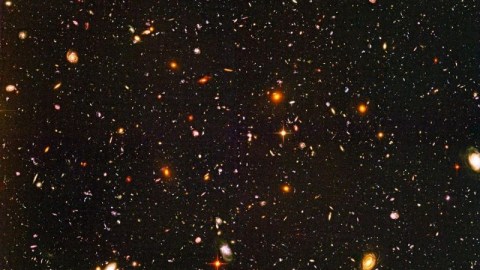
The expanding Universe really is accelerating, and no dusty scenario can explain it.
20 years ago, our understanding of the Universe underwent a revolution. For generations, we had known the Universe was expanding, but we didn’t know its fate. Whether it would recollapse (with gravity defeating the expansion), expand forever (with the expansion defeating gravity), or live right on the border between the two cases (with expansion and gravity perfectly balanced) was one of cosmology’s greatest open questions.
Then, in 1998, two independent teams — the high-z supernova search team and the supernova cosmology project — both released their results that showed that ultra-distant supernovae were far too faint to be consistent with any of these. The Universe wasn’t just expanding, the expansion was accelerating. Expansion defeats gravity, and a new form of energy was required to explain the observations: dark energy.
But many scientists were skeptical. After all, if things were fainter than expected, maybe the Universe wasn’t accelerating. Maybe it was just dust? For years, that notion was the main competing idea to dark energy. Here’s how it died.
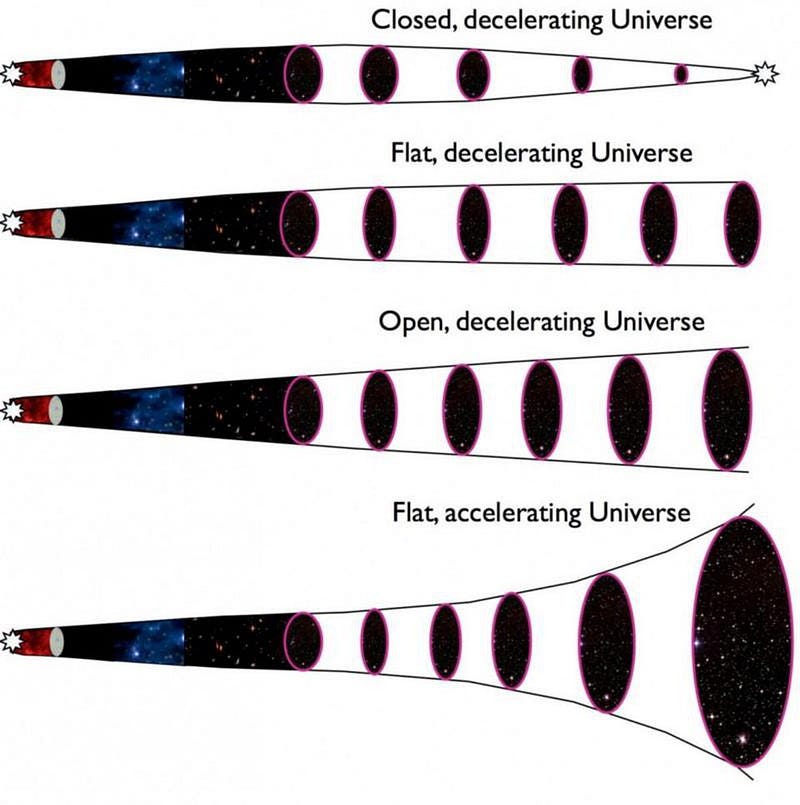
The way the Universe expands is inextricably linked to the matter and energy present within it. A Universe dominated by matter will expand differently than one dominated by radiation; the composition of your Universe and how it changes over time determines how it expands. Because of this, a primary goal of cosmology, for a long time, was to measure two major features: the expansion rate and how it changes over time.
But we can’t measure the expanding Universe directly. We can only measure objects within the Universe. So we don’t measure the Universe’s expansion; we measure how bright or how big objects appear to be. If we know some things about them — their intrinsic brightness, their apparent brightness, and their redshift — we can infer their distance from us, and use that to calculate the expansion history of the Universe.
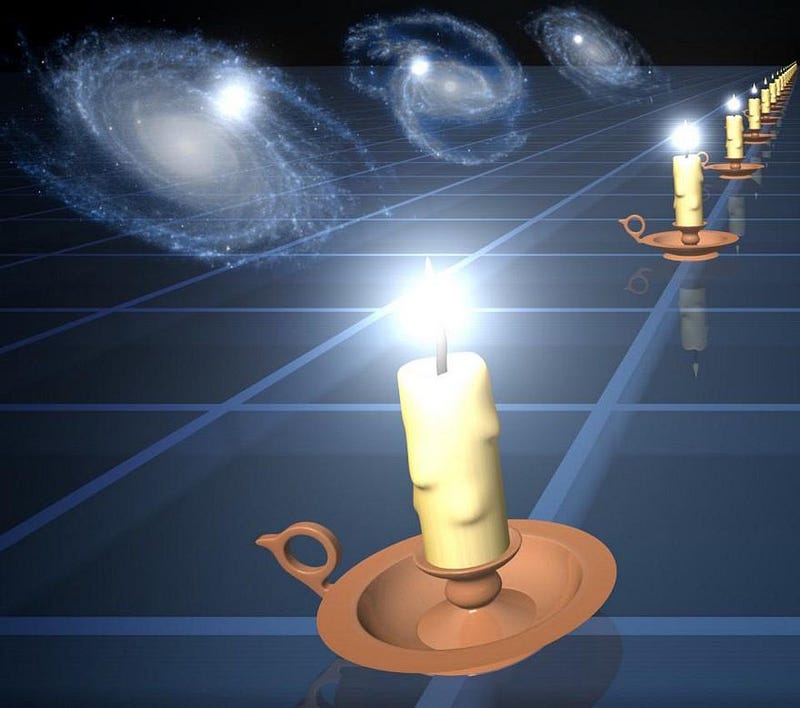
Unless, of course, there’s a confounding, polluting factor in there. If you knew you had a 60-watt light bulb and you observed it to have a particular brightness, you’d be able to calculate how far away it is. The brightness-distance relation is very simple: observed brightness falls off as the inverse of the distance squared (b ~ 1/r²).
But if it’s foggy out, you’re going to have a problem. The light will appear fainter than the simple brightness-distance relation predicts, in proportion to the density of the fog. If you just measured that distant light and applied the brightness-distance relation, you’d conclude its distance was greater than it actually is. Your results would be biased, because you didn’t account for the fact that something is blocking a portion of the light.

So if you apply this logic to these fainter-than-expected supernova, you might wonder if there was some kind of cosmic “fog” blocking this distant light. We don’t have fog in the Universe, but we do have light-blocking dust. And if you put enough dust at great enough distances, you could potentially explain why supernovae appear fainter without dark energy. It’s the first thing you’d consider; additional dust is far less of a revolution than a new type of energy permeating the Universe.
So that became a proposition: there was some additional dust in the distant Universe, and the reason the supernovae appeared fainter wasn’t because they were farther away due to an extra expansion of space, but because dust was blocking the light.
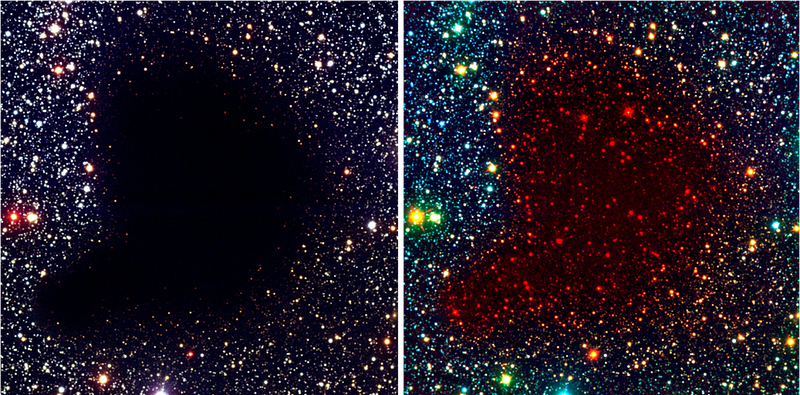
Dust grains, however, come in particular sizes, and the size of the dust grains determines which wavelengths of light are preferentially blocked, with most dust better at blocking blue than red light. This is why there are many dark nebulae in the Universe that block the visible light, but if you look with an infrared telescope, you can see the stars behind that nebula.
Measurements of different wavelengths of light, however, didn’t show a preferential light-blocking phenomenon. They instead showed that both red and blue light were reduced by equal amounts. You might think that rules out dust as an explanation, but that’s not necessarily so. What if the dust in the distant Universe was of a new type, that blocked all the wavelengths of light equally?
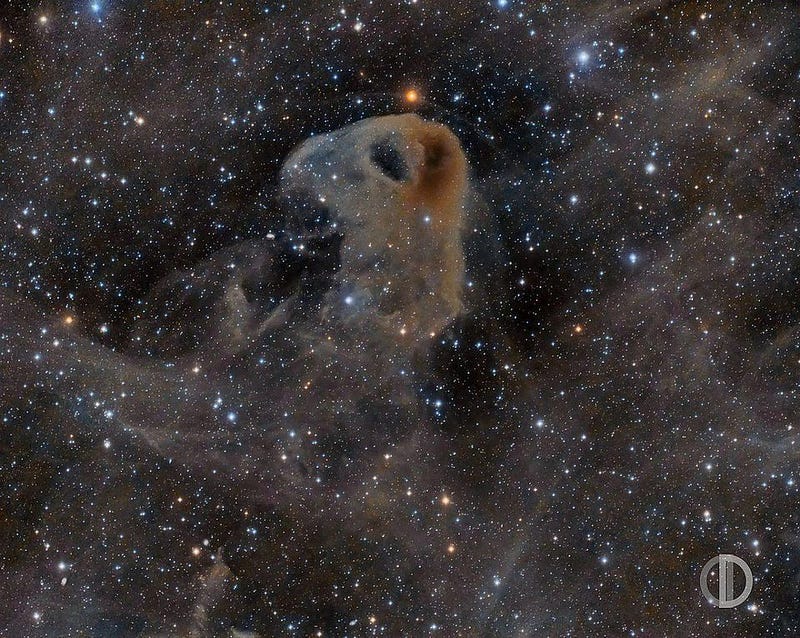
This undiscovered type of dust, dubbed “grey dust,” could block all wavelengths equally. If you were to create a population of dust grains that had a specific size distribution that spanned many orders of magnitude in scale, it could, theoretically cause this dimming effect equally across all wavelengths. Even though we’ve never discovered such a dust distribution naturally, we can imagine that the Universe creates it in places where we cannot directly measure it.
So we needed some way to put that to the test, and that involved looking at supernovae at a variety of distances. If it were grey dust, there should be more of it continuing to block progressively more light at greater distances. If dark energy were correct, instead, the expansion of the Universe predicts a different result. By 2004 or 2005, the results were abundantly clear.
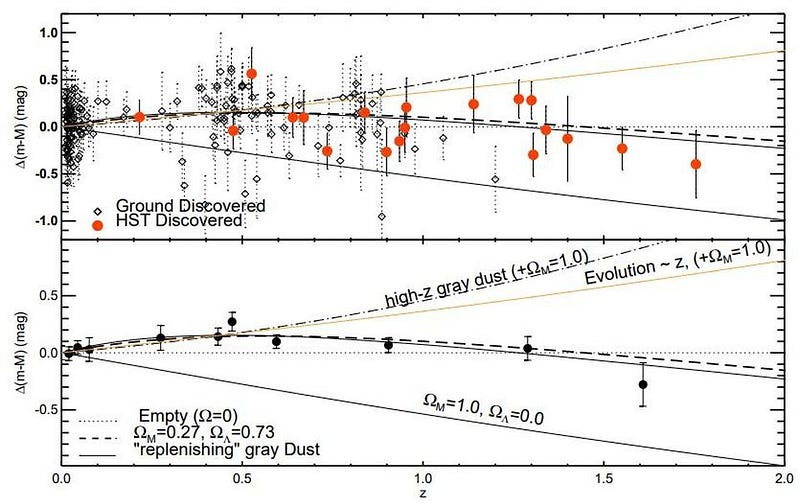
Dark energy was consistent with what we saw; grey dust was out.
But did that mean dark energy must be real?
Not necessarily. You can always modify your “grey dust” explanation in a way that it fits the data: by causing that grey dust to change in density and location over time as the Universe expands: “replenishing grey dust.” If you inserted a method to create new, grey dust to keep it at a constant density as the Universe expanded, you could again match the data.
But nobody works on replenishing grey dust. By the time we arrived at this suite of data, the last reasonable skeptics promoting dusty explanations had all given up.

The reason is simple: with the addition of enough extra free parameters, caveats, behaviors, or modifications to your theory, you can literally salvage any idea. As long as you’re willing to tweak what you’ve come up with sufficiently, you can never rule anything out. If you wanted to concoct a dusty explanation that mimicked the effects of dark energy, you could do it. At some point, though, you lose all physical motivation, and you’re coming up with multi-parameter explanations to explain an observation that a single free parameter — dark energy — gave you before you started tinkering with your dust theory.
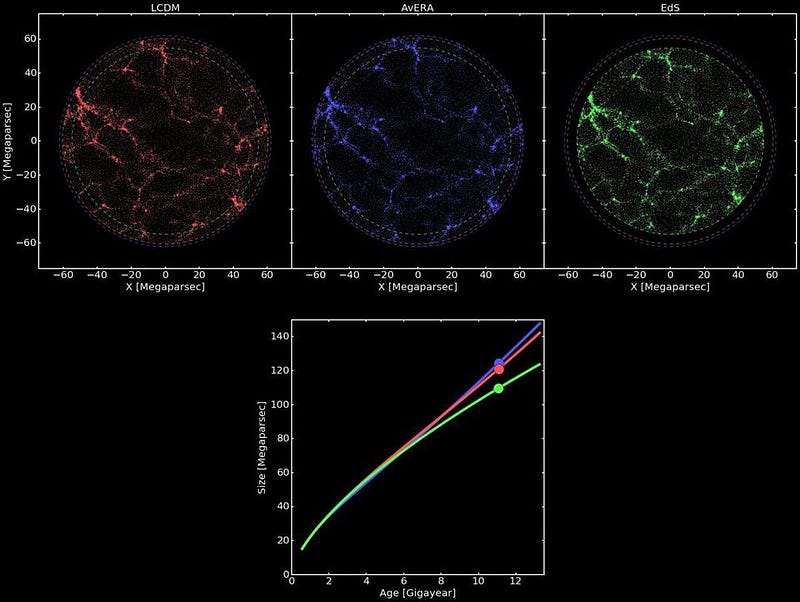
More than 100 years ago, the physicist Max Planck said the following:
A new scientific truth does not triumph by convincing its opponents and making them see the light, but rather because its opponents eventually die, and a new generation grows up that is familiar with it.
We often paraphrase this as, simply, “physics advances one funeral at a time.” If you are someone who’s wedded to the idea that dark energy isn’t a good explanation for the Universe — which is usually rooted in a feeling, not in evidence — you can always come up with an alternative explanation for what we observe. But most such explanations, like replenishing grey dust, are an example of special pleading, not an example of good scientific work.
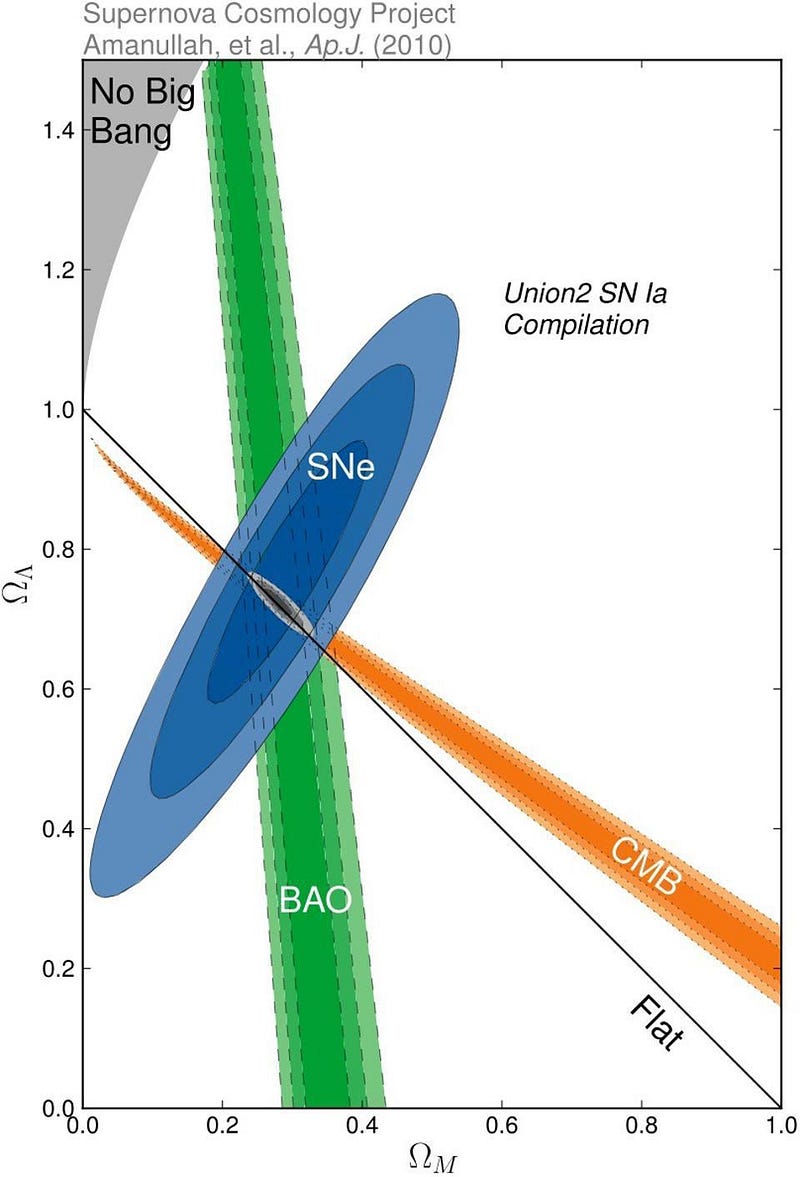
There are other ways to make distant supernovae appear fainter than they ought to — such as having photons oscillate into axions — but that still won’t fit the ultra-high-redshift supernovae. We don’t even rely on supernovae for dark energy’s existence anymore: we have sufficient evidence from the large-scale structure of the Universe and the Cosmic Microwave Background to demonstrate its necessity.
When the contortions you must perform to salvage your competing idea reaches the level of absurdity, you must abandon it. The dusty alternative to dark energy has lost all its predictive power and physical motivation. Dark energy explains the Universe we observe; dust of any known form does not. It wasn’t bias or prejudice that killed dark energy’s main competitor. It was information from the Universe itself.
Ethan Siegel is the author of Beyond the Galaxy and Treknology. You can pre-order his third book, currently in development: the Encyclopaedia Cosmologica.





